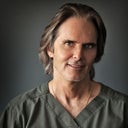I'm 14 months post op with thin skin and my insides still look like this and i can barely breathe while bicyling or exercising. What is going on?
Answers (7)
From board-certified doctors and trusted medical professionals

Dr. Lexie Wang, MD
Board Certified Facial Plastic Surgeon, Board Certified Otolaryngologist
Answer

Dr. Jacob Tower, MD
Board Certified Facial Plastic Surgeon, Board Certified in Otolaryngology – Head and Neck Surgery
Answer
Dr. Mats Hagstrom, MD (license on probation)
Board Certified Plastic Surgeon
Answer
More Rhinoplasty Questions
See all Rhinoplasty Q&AWE SEND PRETTY
EMAILS
What’s trending? Who’s turning heads? Which TikTok myths need busting? We’ve got you. No fluff, no gatekeeping—just real talk. Get our free, unfiltered newsletter.


